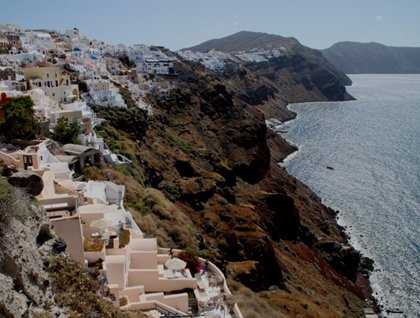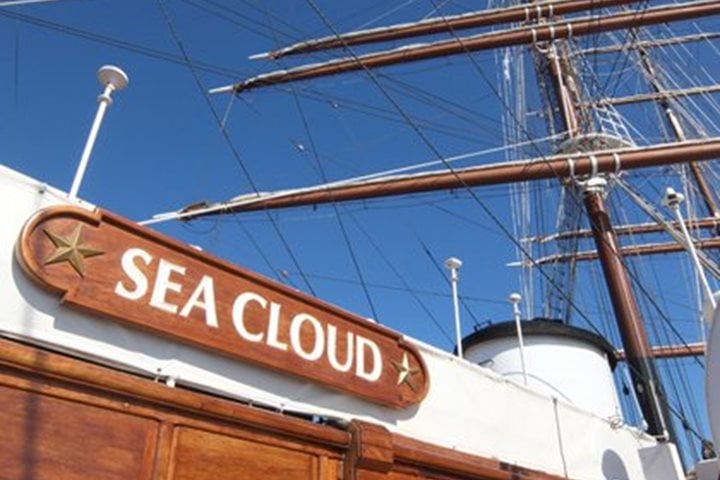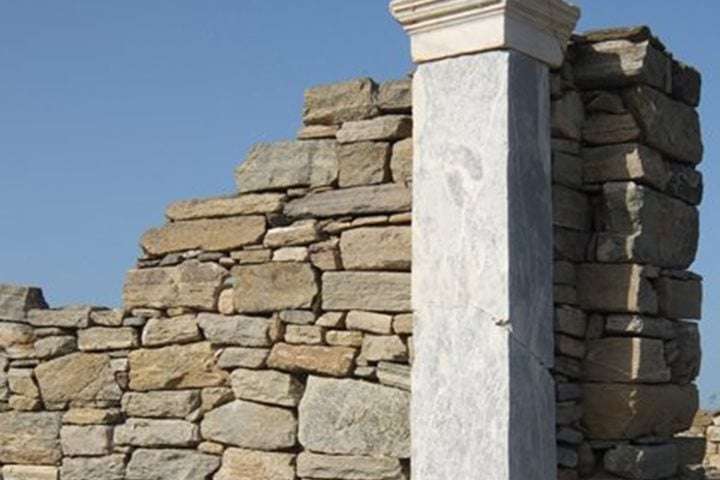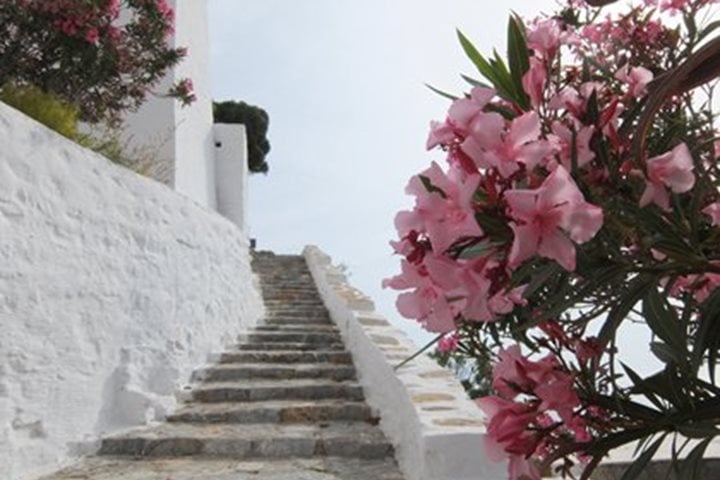We sailed from the north into the caldera of Santorini last night, through the channel between the main island of Thera and the smaller Therasia, arriving just in time to watch a golden sunset light up the dramatic inner crater walls. The Santorini caldera was formed approximately 3,600 years ago when a massive explosive volcanic eruption occurred—the second largest in human history—which is attributed to the demise of the famous Minoan civilization during the Late Bronze Age. Today, it is a popular vacation destination, and we had the opportunity to experience both the rich ancient history and colorful modern society.
Bright and early in the morning, we took a rocky boat ride from Sea Cloud, past the youngest island of Nea Kameni (“New burned island”) to the port of Athenios, and drove through several villages overlooking the rim of the caldera, on our way to the town of Oia. Oia is a stunning village on the north rim of the caldera, known for its beautiful sunsets and picturesque white and blue houses. We spent the morning wandering the MC Escher-like footpaths and stairways, practicing our photographic skills and taking advantage of the Greek specialties offered by the many shops that crowd the narrow paths.
We boarded the buses and drove through the farmlands, where we were able to see the richness of agriculture that takes place on the island, from grapes to cherry tomatoes to white eggplant, en route to the small village of Pyrgos. At a local restaurant on the main square, we indulged in a traditional Greek lunch called a “meze,” a variety of appetizers that featured local produce, meat, and wine made by our gracious host, Nektarios.
After lunch, most of the group was immersed in the ancient history of the Santorini. We began at the Prehistoric Museum in Fira, where our Greek guides, Laura and Stella, told us of the prehistory of the island, from the Neolithic to the Late Bronze Age eruption of Santorini. The Museum holds a variety of artifacts that were found at the archaeological site of Akrotiri, including bronze tools, pottery, and frescoes, that were incredibly well preserved for thousands of years by the pumice and volcanic ash that covered the town during the eruption. Akrotiri itself was our next stop, to see the ongoing excavations that were begun nearly 50 years ago. Strolling through the ancient streets, the same streets on which the Minoans would have walked, is a very special experience, taking you back thousands of years in time.
After a very full and exciting day, we took the small boat back to Sea Cloud, where we were treated to a traditional Greek dinner of suckling pig, freshly caught sardines, and local Santorini white wine. This was one of the most entertaining evenings of the cruise, with a viewing of Around Cape Horn, an entertaining movie about a square-rigger sailing the “wrong way” around Cape Horn, followed by the Sea Could Shanty Gang, serenading us to the Aegean moonlight.







